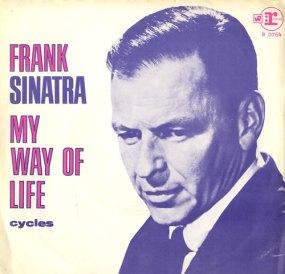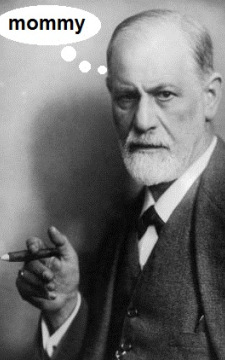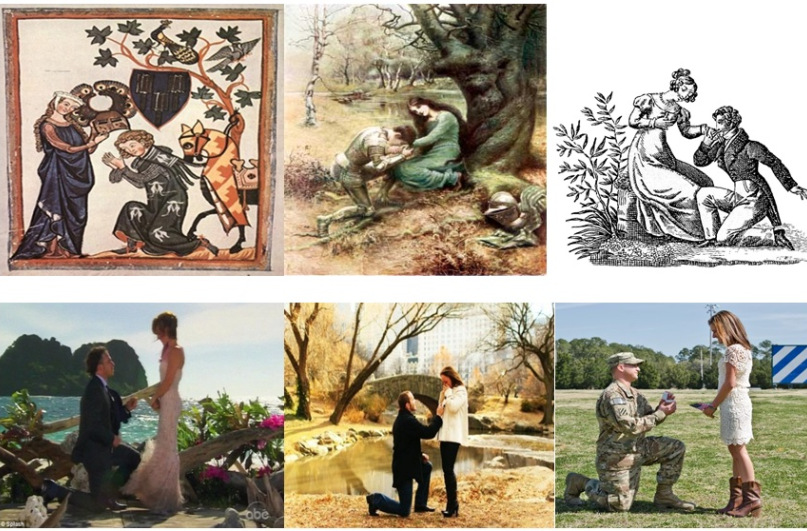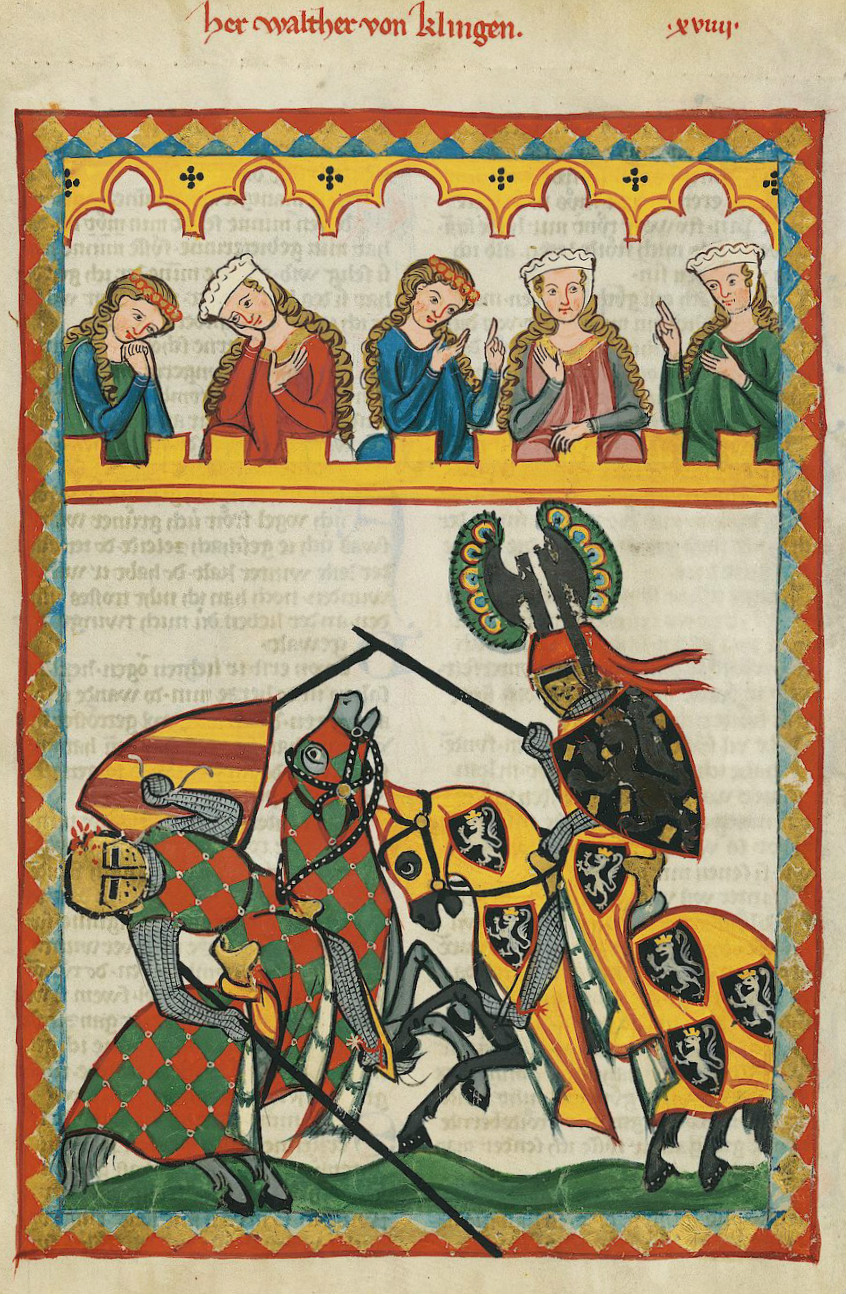In this article I attempt to define the cultural phenomenon of ‘Men Going Their Own Way’ (MGTOW), a contemporary movement that sees men rejecting traditional relationships with women.
Men’s Human Rights Activists (MHRA’s) have always promoted the MGTOW lifestyle in one form or another, and in many ways the men’s rights movement is synonymous with the intent of MGTOW. So it should come as no surprise that two men from an early men’s rights forum (Ragnar and Meikyo) actively promoted the phrase Men Going Their Own Way.
Ragnar, one of the promoters of the phrase describes the moment as follows:
“You see all the ideas were floating around on the internet. We were frustrated that we couldn’t get men to build an organization, couldn’t get men to come to this damned meeting- everybody was going their own damned way, and the fact that men went their own way, we started to use that phrase and we started to talk about what’s important for men… who’s going to define their masculinity? Well, they actually have to do that themselves, they have to find out what it is for themselves. So, as you have the responsibility for your own actions, well then it’s also your responsibility to define who you are as a man.” Ragnar [1]
More interesting is the growth of ideas that have attached themselves to the concept that make it all but impossible to define what MGTOW is. So that will be the purpose of this article – to locate a single definition compatible with the variety of descriptions being proposed. This can be achieved by applying Occam’s razor to all extraneous ideas and dogmas that have attached themselves to MGTOW – to those pet ideas that have hitched a ride on the core motive so that we end up with a short definition everyone agrees on.
We’ll start here with a small sample of ideas and practices that have attached themselves to the MGTOW concept that can be considered superfluous to a limited definition that is going to suit everyone. Here then are a few of those add-ons to what we will call the core definition of MGTOW:
MHRAs are not MGTOW:
This false claim is easily discounted. According to the core definition of MGTOW (see below) many MHRAs are MGTOW, so any claims that these are opposed orientations doesn’t prove useful for constructing a definition. Some claim that the ‘A’ in MHRA refers to the word activism and so must be about group-based political actions – hence unrelated to men’s individual path to liberation. That argument, however, is based on a false premise, because a Google search reveals that the ‘A’ refers not only to activism but to advocacy, including self-advocacy – at least for the majority who use the acronym. So the argument that MGTOW are working toward a goal opposite that of MHRAs amounts to a false and divisive proposition.
MGTOW is anti ‘traditionalism’:
This widespread and increasingly popular stance in the MGTOW movement was elaborated largely by Paul Elam and Barbarossaaa. Traditionalism refers to traditional gender roles for men and women, roles which most everyone in the MHRM/MGTOW movement reject as destructive to a man’s wellbeing and freedom. However a small percentage of self-described MHRAs/MGTOW do advocate traditional gender roles, especially men in the earlier MRM who were split on this question with perhaps half endorsing traditionalism and half rejecting it.
 Those advocating traditional gender roles claim men can enjoy significant freedom by stipulating what they are willing to accept as a viable and fair ‘role-division’ in relationships with women – a claim that can be demonstrated, they say, by a study of traditional males who embodied Sinatra’s song “I Did It My Way.” Whatever freedom these men pretend to enjoy they are still laboring within that narrow and self-limiting paradigm that requires male utility in exchange for a woman’s charms, which means he continues to live the ‘gynocentric way’ even if he feels he is doing it “his way.” The man must continue to labor outside the home and bring home the bacon, while his wife occupies herself as a homemaker. In terms of logical categories it’s obvious that traditionalism and radical male autonomy are mutually exclusive, meaning that if traditionalists want a full taste of freedom they must, by definition, look for it outside of the traditionalist template.
Those advocating traditional gender roles claim men can enjoy significant freedom by stipulating what they are willing to accept as a viable and fair ‘role-division’ in relationships with women – a claim that can be demonstrated, they say, by a study of traditional males who embodied Sinatra’s song “I Did It My Way.” Whatever freedom these men pretend to enjoy they are still laboring within that narrow and self-limiting paradigm that requires male utility in exchange for a woman’s charms, which means he continues to live the ‘gynocentric way’ even if he feels he is doing it “his way.” The man must continue to labor outside the home and bring home the bacon, while his wife occupies herself as a homemaker. In terms of logical categories it’s obvious that traditionalism and radical male autonomy are mutually exclusive, meaning that if traditionalists want a full taste of freedom they must, by definition, look for it outside of the traditionalist template.
Since the invention of ‘romantic chivalry’ in the Middle Ages (and not before), MGTOW men became an exception to the new rule, and those who continued to practice it were held in suspicion, shamed and rejected by society. The new gynocentric mandates viewed free men as recalcitrant, and from that moment in history society would no longer tolerate any man opting out of his gynocentric “duty” toward women. So I find myself in full agreement with Paul Elam and Barbarossaaa that traditionalism constitutes the antithesis of any coherent definition of MGTOW, a fact so blatant it can be considered implicit in the definition without the need state it.
Veto-MGTOW:
For some men MGTOW is demonstrated exclusively by veto power. Veto constitutes a narrow philosophical practice of negating things, which is nevertheless a perfectly acceptable expression of MGTOW. However some MGTOW tend to specialise in veto alone and have no other tool in their toolbox. About veto:
‘This singular kind of power demonstrates agency dedicated wholly to negation. Its sole strength lies in its ability to frustrate the will of others… its power is wholly prohibitive, as the word originates from the Latin meaning: “I forbid”.’ [2]
Stating what you don’t accept (veto) is a simple task compared with figuring out and articulating what you do want for your life. Living the MGTOW lifestyle usually includes a mixture of positive aspiration – such as figuring out the kind of friendships you might want to cultivate, or the career or hobby you might want to pursue – and is not limited merely to “I don’t want this, and I don’t believe that”. Veto-MGTOW naturally falls well short of a universal law for MGTOW.
MGTOW is anti-relationships with women:
The ‘no relationships’ position is supported by a small but vocal minority of the MGTOW community, and particularly by the veto-MGTOW contingent. Conversely, many MGTOW develop positive criteria for cultivating relationships with women on the basis of friendship or other relationships that may or may not include sexual relations depending on preference. For instance, in his recent discussion with Dean Esmay, Barbarossaaa –a respected MGTOW advocate- indicated that he engages in sexual friendships with women that include going out to dinner and other fun activities. The guiding principle for these men is that relations with women are workable if they can be based on creative agreements outside the usual gynocentric criteria, and can be backed with a determination to reject groupthink and societal pressure to conform to the typical male role.
Briffault’s law:
The 19th Century Marxist thinker Robert Briffault is remembered for this comment; “The female, not the male, determines all the conditions of the animal family. Where the female can derive no benefit from association with the male, no such association takes place.” This generalization has since been spun out and declared a “law” by some, though Briffault never proposed it as a law. Since it was first coined, others have added addendums and corollaries to this “law” which amount to little more than personal and unscientific opinions. Further, despite the current attempt in MGTOW blogger circles to revive this “law,” a review of the scientific literature shows no support nor even a reference to “Briffault’s Law” – nor is it mentioned in Google Scholar, not once. If anyone can find any academic sources that take this “law” seriously I would welcome a list of citations and will happily update this article to reflect them if provided.
A careful look at Briffault’s “Law” shows it to be two independent statements, with the second arguably more factual than the first. However both statements are too generalized to be useful as a law; yes it often happens that women can be controlling and, for example, may turn out not to like their man’s friends (because women derive no benefit from the association) and so drive them out, but men do this too, and both sexes are hardly 100% successful in doing so. In the latter cases we are talking about highly pathological behaviors in which case Briffault’s Law might better be characterized as “Briffault’s generalization about dysfunctional relationships.”
The implication of this “law” for men going their own way is that, because women supposedly dictate all relationship moves, the male is better off opting out of that power imbalance. Relationships are simply a bad deal. Understandably this assumption of a biology-based female omnipotence is not something universally subscribed to by the MGTOW community and therefore cannot be considered a basis for an agreed definition.
Male mother love:
 This idea suggests that men’s relationship aspirations are driven by an unconscious yearning for “mother” love, from which all MGTOW men should attempt to liberate themselves. Oedipus complex, anyone? Whatever the real influence of “mother” love this presents a historically tired argument for male motivation. It is one that no longer appears in the practice of psychology and for good reason; over 100 years of analysis have proven the theory of less value than first suspected, and the man who first theorized it as a “universal complex” is thought to have suffered the complex himself. Behaviorism, psychoanalysis and the long reign of the Oedipus complex have been superseded by contemporary attachment theory which has deepened our understanding and shown that male need for attachment and affection need not be linked to that word “mother”.
This idea suggests that men’s relationship aspirations are driven by an unconscious yearning for “mother” love, from which all MGTOW men should attempt to liberate themselves. Oedipus complex, anyone? Whatever the real influence of “mother” love this presents a historically tired argument for male motivation. It is one that no longer appears in the practice of psychology and for good reason; over 100 years of analysis have proven the theory of less value than first suspected, and the man who first theorized it as a “universal complex” is thought to have suffered the complex himself. Behaviorism, psychoanalysis and the long reign of the Oedipus complex have been superseded by contemporary attachment theory which has deepened our understanding and shown that male need for attachment and affection need not be linked to that word “mother”.
None of this is to dismiss the pivotal importance of attachment desire in males, and there is much in the so-called “mother love” theory that warrants close and ongoing discussion. In fact the science of attachment is potentially one of the most fruitful paths of investigation for MGTOW there is. The issue here is that whilst promising, the discussion about adult attachment theory in relation to MGTOW is currently underdeveloped and is therefore of limited use as a theoretical base.
Female hypergamy:
This popular theory holds that when it comes to the mating game females can’t resist “trading up” and therefore make unreliable mates for the long-term; it is better for men to avoid relationships with women and go their own way. A decisive piece of data confirming the practice of female hypergamy comes from a talk by Roy F. Baumeister who says that “maybe 80% of the women but only 40% of men reproduced” throughout the history of the human race. However according to follow-up research Baumeister’s “maybe” turned out to be incorrect and the numbers have been superseded by more recent science.
The estimates on historic male/female population sizes are based on The Most Recent Common Ancestor for both males and females. At the time Baumeister’s address where he publicized the ‘findings’ that 2 women reproduced for every 1 man, TMRCA for males was between 50-100 thousand years ago, and the TMRCA for females was 200,000 years ago; leading to a 2 to 1 split favouring female ancestors. Revised genetic studies have found that TMRCA for males is ~142,000 thousand years ago and the TMRCA for females is ~177,000 years ago. This means that Baumeister’s conclusion is void. There is a slight skew towards female ancestors but this may be accounted for by female exogamy and the fact that female generations are shorter than male (women have children earlier then men do). It may also be an artifact of our current level of knowledge into the matter and as our science is refined, the numbers converge.
With the revised figures the importance of the female hypergamy to MGTOW is also revised; we now see a less extreme a picture than the earlier Baumeister figures painted and, one would assume, a somewhat less relevant ideological motivation for MGTOW.
Biological reductionism:
Men are viewed by some MGTOW as eternally groveling trilobites who will not change; they are merely nerve reactions to environmental stimuli with the ultimate aim of sexual reproduction with women.
The typical biological reductionist spends 99% of his conversation promoting human behavior as biologically determined, while meagerly acknowledging (if at all) the role culture plays in inhibiting or encouraging the release of our biological urges. Despite a reluctance to recognize it, cultural control of biology is an undeniable fact; and when a person’s behaviour transgresses a social taboo, the transgressing individual stands a high chance of being incarcerated or killed by edict of the body politic. For instance if hypergamous behavior by women is subject to a taboo in a given culture, then if she transgresses it she may be (literally) stoned to death: score zero for the selfish-gene, and one for culture. Such punishment of “anomalous” behavior sends a message to others about how much of their biological compulsions will be tolerated, and people’s behavior is adjusted to that threat accordingly. Conversely is it not true that some cultures encourage freedom of biological expression more than others? The point of these examples is that cultural dictates –and their wide fluctuations over time– provide the more powerful factor in determining the inhibition or release of biological imperatives.
We need to be wary, then, of those who would explain human behavior as constistent and relatively changeless over long swathes of time and regardless of cultural contexts. This angle is strongly promoted by MGTOW advocate Stardusk whose primary hypothesis goes like this:
“This has been going on for millennia if not millions of years- men have always kowtowed and adhered to the desires of women, and have always been what women wanted them to be. Men have always subordinated their desire for freedom to their desire to reproduce.” [3]
Stardusk further claims that men (one assumes, aside from himself) will never change from their unconscious kowtowing ways. Not only does this hypothesis ignore the wild fluctuations in culture that saw, for example, men of classical times behave much more freely in relation to women than they did, say, in the Middle Ages, it also promotes a reductionist and patently misandric hypotheses about men that is unlikely to gain traction as an explanatory basis for MGTOW.
***
Any of these topics can serve legitimate interests for MGTOW; but the question arises of what binds these disparate ideas together? In order to find a definition of MGTOW we must find a degree of general consensus, some shared factor among the variety of perspectives, or otherwise MGTOW will end up talking about entirely different things. And if there were no common consensus here we would merely have debaters talking about different subjects; one would be talking about female hypergamy and the other would be talking about celibacy with no common ground between them.
So we will need a universally applicable definition that will fit everyone’s criteria for what MGTOW is in spite of the different perspectives that different people hold on its nature. This definition must be a limited one since it can encompass only those parts of MGTOW which all broader definitions hold in common. For this essay the definition is this: Male self-determination.
That, then, is what everybody who discusses MGTOW holds in common regarding the concept. Note in this definition there is no reference to the disputed ideas or practices listed above. Some might insist on including those ideas in the base definition – to piggyback it with a whole range of idiosyncratic concepts – but that is of no use here, for beyond this narrow definition people basically disagree with each other. To be as objective as possible, then, we must take only that which everybody agrees upon as the universally applicable definition.
Self-determination refers simply to the human right to determine the course of one’s life, and to apply self-advocacy in that direction. And let’s not forget that the ‘A’ in MHRA refers to precisely the same advocacy. Self-determination and self-advocacy were always there for men who chose it long before the MGTOW acronym provided another way to say it. We can also state that implicit in this definition is opposition to, and rejection of gynocentrism as being the antithesis of male self-determination. Men who subscribe to gynocentric directives, such as profeminist men, are subscribing to ‘other-determination,’ or ‘determination of self by other’ and need not apply for MGTOW status.
This article does three things. It carves away superfluous ideas from a core definition of MGTOW; it offers a concise definition of MGTOW; and it takes back MGTOW from those who would cleave it from its synonymy with the Men’s Human Rights Movement.
AVfM has churned out hundreds of articles promoting self-determination for men, and it has done so more vigorously than it has commentaries and articles calling for specific political activism. If one wants to soak themselves in a MGTOW atmosphere they need go no further than this high quality MGTOW community that showcases articles and interviews on every aspect of the subject.
A further development worth mentioning is the notion of Women Going Their Own Way (WGTOW). While the persecution of men by gynocentric culture is unique, there exist solid albeit different reasons for women to reject it, including the infantilizing dogma and gender bigotry it pressures women to adopt. The uncommon woman who chooses to renounce gynocentrism in favor of a different path deserves the ‘going their own way’ title announcing self-determination. As long as women use the ‘W’ I take no offence to WGTOW. In fact I applaud it as another slap in the face for gynocentrism.
[youtube=http://www.youtube.com/watch?v=BoXQf2f2Yxo&w=560&h=315]
SOURCES
[1] Dialogue with MGTOW Founders (2012)
[2] Hillman, J., Veto, chapter in ‘Kinds of Power’ p.196, (1995)
[3] Stardusk On the Men in the Matrix
[4] Elam, Paul., A Voice for Men
[5] Barbarossaaa, YouTube Channel
[6] Davison, Diana., Women Going Her Own Way
[7] Esmay, Dean., Youtube Channel
[8] AVfM Wiki Glossary of terms: MGTOW
? Is There Anything Good About Men?
? Genetic Evidence for Unequal Population Sizes of Human Females and Males
? A revised root for the human Y chromosomal phylogenetic tree
? “Copernican” Reassessment of the Human Mitochondrial DNA Tree
? Estimators of human effective sex ratio detect sex biases on different timescales




